Bonaccini and Borgonzoni's communication on Facebook
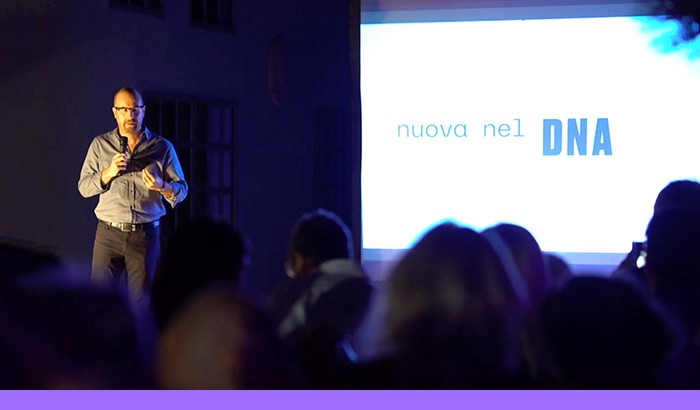
On January 26, in the Italian region Emilia-Romagna, people voted for the renewal of the President and of the Regional Council; the outcome is known and confirmed the reelection of the outgoing Governor.
Facebook, with about 35 million Italian users, is the digital platform where the battle for electoral consensus was fought.
What follows is a very brief analysis of the paid campaigns promoted by the two official pages supporting the candidates:
Stefano Bonaccini https://www.facebook.com/stebonaccini/,
Lucia Borgonzoni https://www.facebook.com/BorgonzoniPres/.
The data are extracted at the time of writing, 01/28/2020.
Page administrators
Borgonzoni's Facebook page has 25 administrators, while Bonaccini's has 14, including one in the UK.
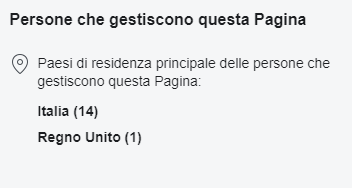
Page administrators of Stefano Bonaccini's Facebook.
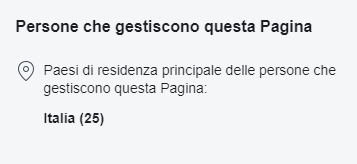
Page administrators of Lucia Borgonzoni's Facebook.
It is not certain that all the administrators listed within the page are equally active, but it is clear that both candidates rely on a team of social media managers, as is to be expected.
Advertising expenditure
It represents the budget allocated to promote the ads. It is entirely aimed at Facebook and does not include the costs of content production and management.

Stefano Bonaccini's Facebook advertising expenditure.
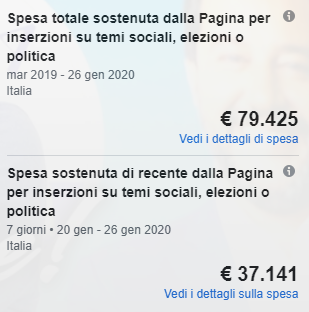
Lucia Borgonzoni's Facebook advertising expenditure.
Lucia Borgonzoni's editorial strategy
The challenger's type of social communication is the same successfully used by The League's leader Matteo Salvini, structured according to the instructions of the spin doctor Luca Morisi, summarizable as follows:
- use of divisive content that tends to elicit the reader's reaction;
- use of shock titles and colors;
- layout in the style of tabloid newspapers;
- pursuing an atmosphere of familiarity.

Paid Facebook posts supporting Lucia Borgonzoni's campaign.

Paid Facebook posts supporting Lucia Borgonzoni's campaign.

Paid Facebook posts supporting Lucia Borgonzoni's campaign.
Stefano Bonaccini's editorial strategy.
Stefano Bonaccini governs a functioning region; consequently, he chose to highlight the achievements, making extensive use of endorsements.
The frequent call to split voting is noteworthy, indicative of Bonaccini's brand strength regardless of the Democratic Party.
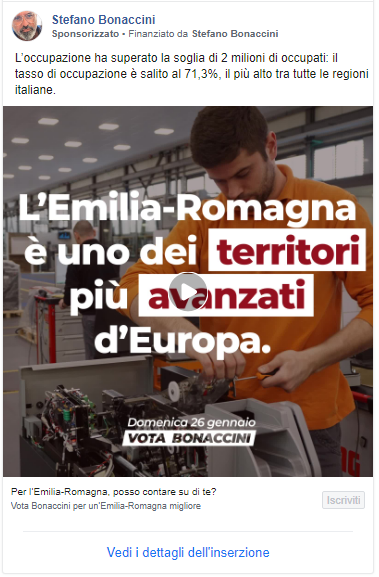
Paid Facebook posts supporting Stefano Bonaccini's campaign.

Paid Facebook posts supporting Stefano Bonaccini's campaign.
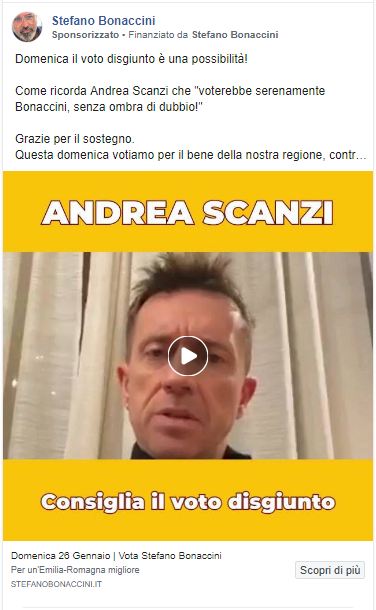 Paid Facebook posts supporting Stefano Bonaccini's campaign.
Paid Facebook posts supporting Stefano Bonaccini's campaign.
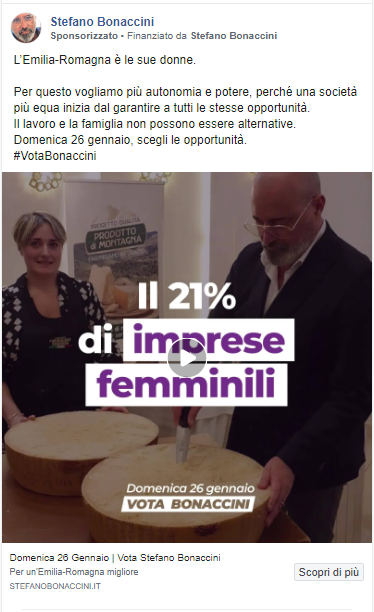
Paid Facebook posts supporting Stefano Bonaccini's campaign.
In summary, on one side, we have Lucia Borgonzoni who chose to conduct an offensive strategy, on the other, Stefano Bonaccini who preferred to highlight the good governance of Emilia.
Worthy of note is Matteo Salvini's contribution to Lucia Borgonzoni's campaign, so significant as to make many Emilians think that the real choice was between Bonaccini and Salvini. On the other hand, Salvini's communication is so pervasive as to inevitably overshadow his party's candidates.
The image shows the advertising expenditure of Matteo Salvini's official Facebook page (https://www.facebook.com/salviniofficial/).
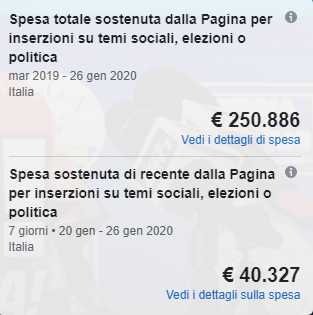
Matteo Salvini's Facebook Advertising Expenditure
I haven't had the time to conduct thorough checks, but my impression is that recently the budget was almost entirely allocated to Emilia Romagna. These are the targeting data from the latest post, which shows the geographical focus. At the end of the page, I share the link for those who wish to delve into it personally.

Data related to a mobilization post for the ER election by Matteo Salvini
It's important to remember that digital platforms' algorithms tend to reward content with a high level of engagement
(interactions, shares), promoting its spread. This strategy has already been successfully used by Gianroberto Casaleggio during the Five Stars Movement party campaign. Regardless of political positions, it's clear that the daytime-tv-style language tends to provoke user reactions. In my opinion, those involved in political communication should strive to avoid the allure of divisive content, the relentless search for an enemy, and oversemplification that negates content.
Silvio Berlusconi was the Marcel Duchamp, of whom Casaleggio/Grillo/Renzi/Salvini are somehow the heirs.
Final note: my post is based on transparency data made available by Facebook following controversies over the use of personal data by the social network and the Cambridge Analytica scandal.
For those interested in exploring the campaigns of the two candidates, here are Borgonzoni's data https://bit.ly/2O67S2L, Bonaccini's data https://bit.ly/3aMrAdG. Bonus, Matteo Salvini https://bit.ly/37AduKz.
This page has been translated using automated translation tools and artificial intelligence technologies. We strive to ensure that the content is accessible in multiple languages, but please be aware that the translation may not be perfect. If you have any doubts or need clarifications, please feel free to contact us.

